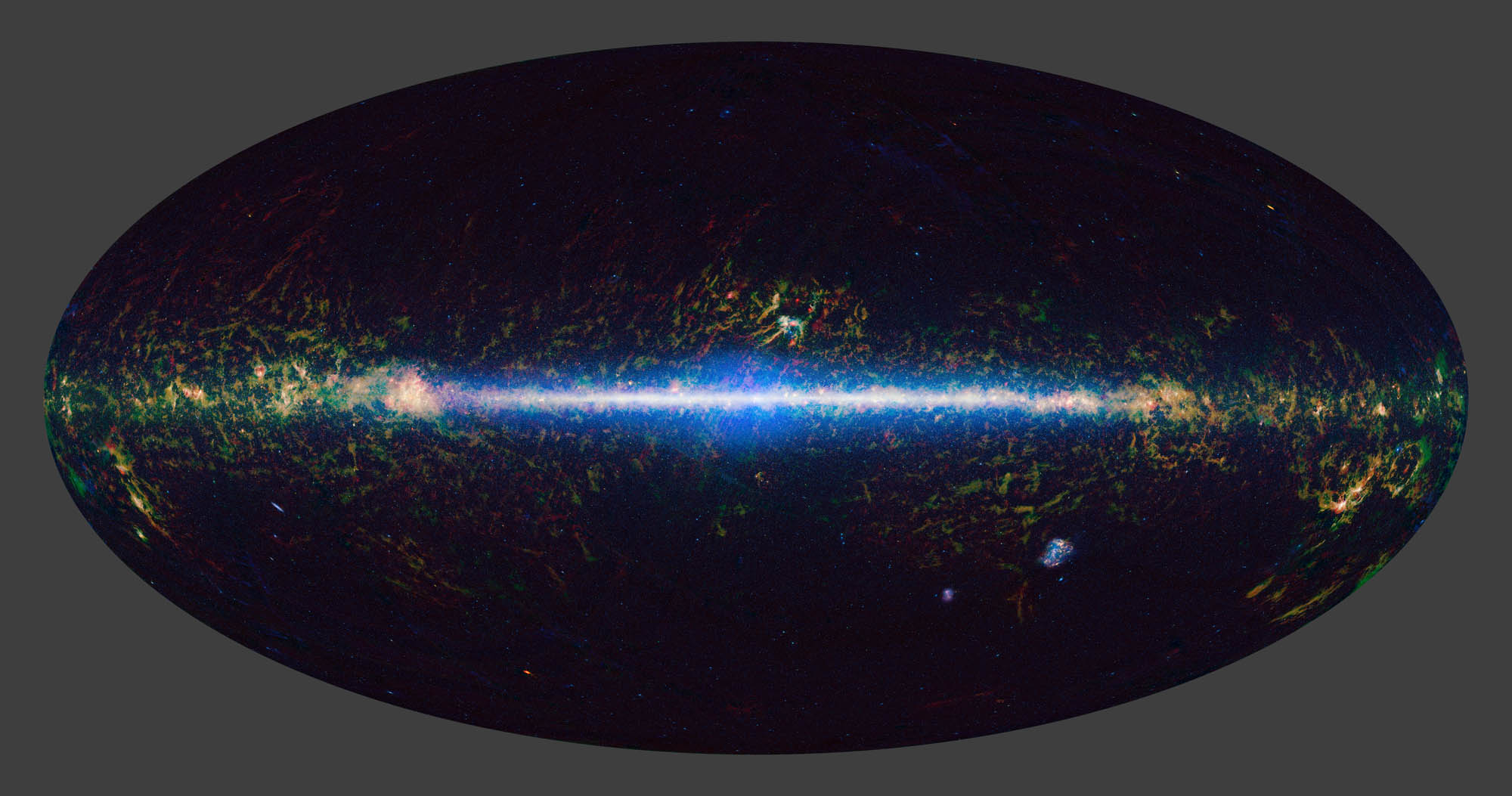Guest Investigator/Observer Programs
Guest Investigator Program
The 2010 Decadal Survey, New Worlds, New Horizons (NWNH), recommended that two major programs be accomplished with one telescope: the search to understand the acceleration of the universe and the search for planets around other stars. The Decadal Survey also made clear that the same mission would provide opportunities for advancing knowledge in many other areas of astronomical science, both through a robust Guest Observer Program (~25% of the total observing time) for new observations and a strong Guest Investigator Program for utilization of the data sets from the two core programs.
The cameras on most other space telescopes (HST, Spitzer, JWST) typically have FOV's of order a few to a few tens of square arc minutes in size, and therefore those telescopes are best suited to deep, narrow field imaging and spectroscopy. The largest area surveyed by HST covers a region of sky only ~2 square degrees. The largest area extragalactic survey conducted by Spitzer (to date) covered ~65 square degrees. The largest area Galactic survey conducted by Spitzer - the GLIMPSE and follow-on programs - covered the entire Galactic plane, with a total area ~1000 square degrees. By contrast, the Roman Space Telescope dark energy and microlensing surveys will obtain data over ~2000 square degrees with a combination of depth and resolution that will allow revolutionary discoveries in almost every field of astronomy. The data obtained for the dark energy programs (see table below) will be an extraordinary resource for a vast range of astrophysical studies through Guest Investigator programs, while the Nancy Grace Roman Space Telescope facility enables revolutionary approaches to a still broader range of astronomical problems through Guest Observer programs (see list below).
Baseline Survey Characteristics
| Survey | Bandpass | Area (deg2) | Depth (AB mag) | Duration | Cadence |
| Exoplanet Microlensing | Z, W | 2.81 | N/A | 6 x 72 days | W: 15 min, Z: 12 hr |
| HLS Imaging | Y, J, H, F184 | 2000 | Y=25.6, J=26.7, H=26.5, F184=25.8 | 1.3 yr | N/A |
| HLS Spectroscopy |
1.35 - 1.95 um (R=461λ) |
2000 | 0.5x10-16 erg/s/cm2 @ 1.65um | 0.6 yr | N/A |
| SN Survey | 0.5 yr (in a 2-yr interval) | 5 days | |||
| Wide | Y, J | 27.44 | Y=27.1, J=27.5 | ||
| Medium | J, H | 8.96 | J=27.6, H=28.1 | ||
| Deep | J, H | 5.04 | J=29.4, H=29.4 | ||
| IFC Spec |
FoV=3" & 6", R~100;
7 exposures with S/N=3/pix, 1 near peak with S/N=10/pix, 1 post-SN reference with S/N=6/pix Parallel imaging during deep tier IFC spectroscopy: Z, Y, J, H ~29.5, F184 ~29.0 |
||||
Note: Bandpasses: Y: 0.927-1.192um; J: 1.131-1.454um; H: 1.380-1.774um;F184: 1.683-2.000um
Guest Observer Program
The Roman Space Telescope will offer a General Observer (GO) program that supports community-based observing. The GO science of the Roman Space Telescope will have high impact over a broad range of modern astrophysics. Taking Hubble as a guide, the GO program of the Roman Space Telescope will be at least as important to the astronomical community and the interested public as the dark energy, microlensing planet, and high contrast imaging components. The very wide field, large aperture, deep near-IR reach, and excellent spatial resolution of the observatory will ensure that a multitude of GOs pursue numerous programs requiring degree-sized fields in the statistical realm for the first time. Examples include studies of stellar populations in the Milky Way and its neighboring galaxies and mapping large-scale structure through cosmic time. Many of these will be logical outgrowths of single object and small sample studies with HST, JWST, and other observatories, but they are likely to have outsized impacts just as SDSS, Kepler, and other wide field surveys already have. GO science programs can also make full use of grism spectroscopy, IFC spectroscopy, and coronagraphic imaging on the Roman Space Telescope.
Compared to previous, smaller-aperture concepts of the Roman Space Telescope, the significantly increased sensitivity, and higher spatial resolution over a similar field of the Roman Space Telescope will substantially increase the potential and value of its GO program. This is true for both dedicated GO observations and for guest investigator (GI) use of data sets produced in the high-latitude, supernovae, and microlensing surveys. As for nearly all other missions, the astronomical community will be quite creative and will use the Roman Space Telescope for GO programs that the mission SDTs and SWGs will not conceive. If history is a guide, then these may prove to be among the highest impact programs executed with the telescope, rivaling or surpassing the results of the mission's primary dark energy and microlensing surveys.
Appendix D of the WFIRST-AFTA SDT Report (2015) contains a rich set of ~40 potential Guest Investigator (GI) and Guest Observer (GO) science programs that are uniquely enabled by the Roman Space Telescope and address many of the key questions identified in the decadal survey. These programs were contributed by members of the broader astronomical community, and clearly illustrate that the Roman Space Telescope will truly be a "Great Observatory" for the 21st Century. Some of the scientific investigations enabled by the Roman Space Telescope are:
- Planetary Bodies: e.g., Kuiper Belt Objects, the outer solar system, Spectroscopy of exoplanets, etc.
- Stellar Astrophysics: e.g., Brown dwarfs, Stellar fossils, Neutron stars and black holes with microlensing, etc.
- Galactic Astrophysics / Local Volume: e.g., Proper motion of bulge stars, The mass of the Milky Way, Near-field cosmology, etc.
- Extragalactic Astrophysics: e.g., Strong lensing, Evolution of massive galaxies, Resolved stellar populations, etc.
